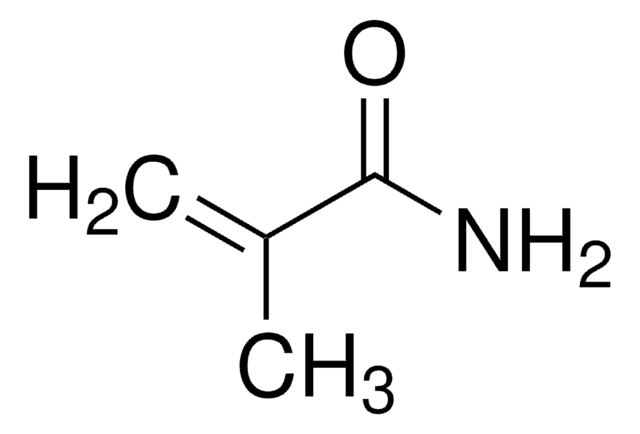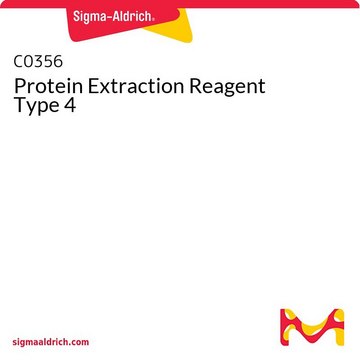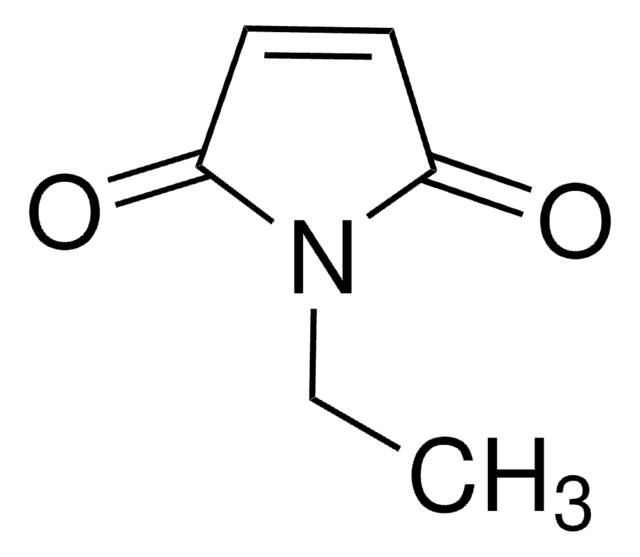A3221
Iodoacetamide
Single use vial of 56 mg
Synonym(s):
2-Iodoacetamide, IAA, Monoiodoacetamide, alpha-Iodoacetamide
About This Item
Recommended Products
biological source
synthetic (organic)
Quality Level
Assay
≥99% (HPLC)
form
powder
packaging
vial of 56 mg (Single use)
storage condition
(Tightly closed. Dry. Keep in a well-ventilated place. Keep locked up or in an area accessible
only to qualified or authorized persons.)
color
white to off-white
mp
92-95 °C (lit.)
solubility
H2O: soluble 50 mg/mL, clear, colorless to faintly yellow
suitability
suitable for LC-MS
application(s)
microbiology
storage temp.
2-8°C
SMILES string
NC(=O)CI
InChI
1S/C2H4INO/c3-1-2(4)5/h1H2,(H2,4,5)
InChI key
PGLTVOMIXTUURA-UHFFFAOYSA-N
Looking for similar products? Visit Product Comparison Guide
General description
It has specific interactions with cysteine and histidine residues in proteins, affecting enzymes like ribonuclease. While it may react slowly with histidine, its inhibitory properties contribute to the research on proteases, such as cysteine proteases. Iodoacetamide is known for its irreversibility in inhibiting enzymes and its ability to form stable protein derivatives, making it valuable in studying protein structures, protein behavior, and enzyme inhibition.
Application
- to prevent enzymatic disulfide reduction in the protein samples
- to inhibit glyceraldehyde-3-phosphate dehydrogenase effectively blocking ATP production in cell biology research
Biochem/physiol Actions
Features and Benefits
Packaging
Other Notes
Legal Information
also commonly purchased with this product
comparable product
Signal Word
Danger
Hazard Statements
Precautionary Statements
Hazard Classifications
Acute Tox. 3 Oral - Aquatic Chronic 4 - Resp. Sens. 1 - Skin Sens. 1
Storage Class Code
6.1C - Combustible acute toxic Cat.3 / toxic compounds or compounds which causing chronic effects
WGK
WGK 3
Flash Point(F)
Not applicable
Flash Point(C)
Not applicable
Personal Protective Equipment
Choose from one of the most recent versions:
Certificates of Analysis (COA)
Don't see the Right Version?
If you require a particular version, you can look up a specific certificate by the Lot or Batch number.
Already Own This Product?
Find documentation for the products that you have recently purchased in the Document Library.
Customers Also Viewed
Articles
In this study, we developed a rapid trypsin digest kit that, at elevated temperatures, yielded reliable, reproducible results in less than 2 hours on a wide variety of substrates for mass spectrometry.
Our team of scientists has experience in all areas of research including Life Science, Material Science, Chemical Synthesis, Chromatography, Analytical and many others.
Contact Technical Service











